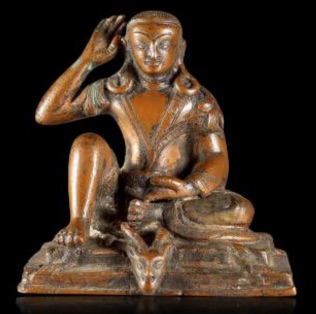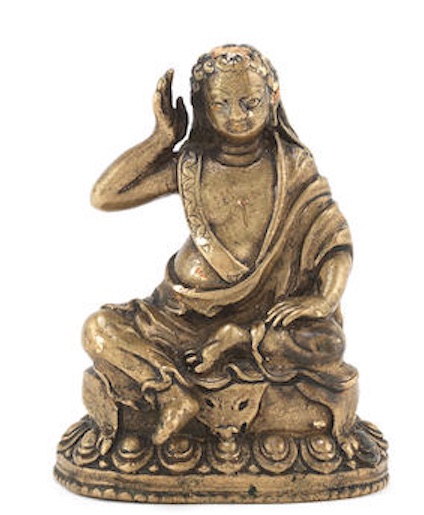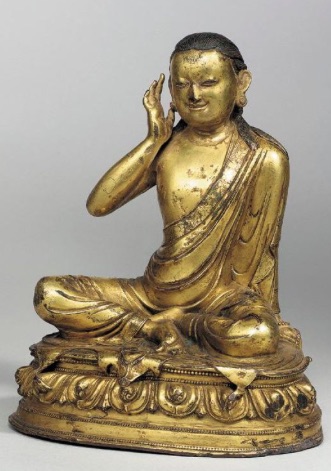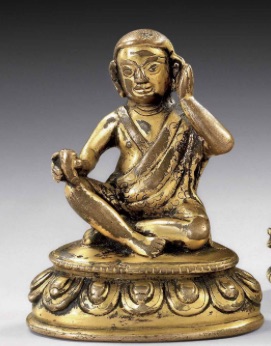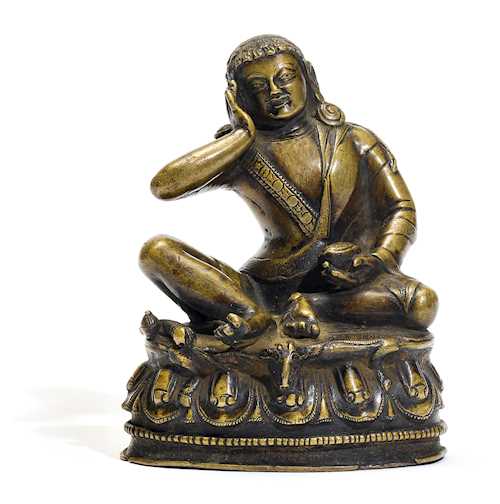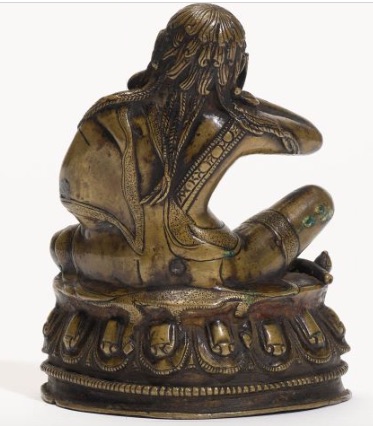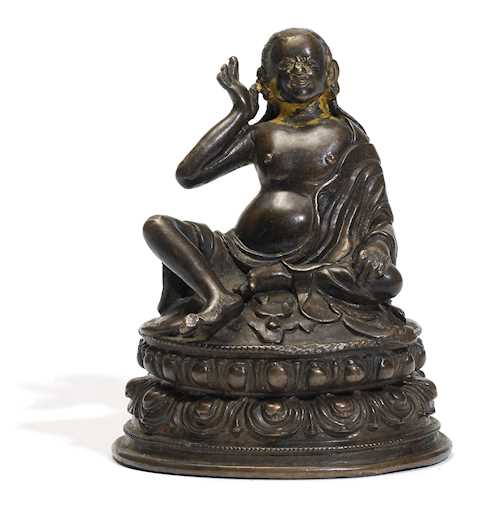
16th-17th century, Tibet, Milarepa, polychrome zitan wood, private collection, photo on Sotheby’s .
Milarepa, identified by the inscription on the base and by the way his right hand is cupped to ‘listen to the echoes of nature’. He is seated in a relaxed manner with his right knee raised, on a double-lotus base covered with the skin of a deer, holding a skull cup in his left hand. His sumptuous silk garment is decorated with a floral print.

Circa 16th century, Tibet, Milarepa, copper alloy, private collection, photo on Cornette de Saint Cyr .
Seated on a single lotus.

18th century, Tibet, Milarepa, gilt bronze, private collection, photo on Drouot .

18th century, Tibet, Milarepa, bronze, private collection, photo on Hardt .
Seated on two cushions.

18th century, Tibet, Milarepa, polychrome clay, private collection, photo by Tessier-Sarrou, 16th December 2013 lot 113.
Inside a cave, his hair tied in a bun, the skull cup containing a vase.

18th century, Tibet, Milarepa, clay with traces of polychromy, private collection, photo on Tessier-Sarrou, 16th December 2013 lot 114.
Seated on a single cushion.

18th century, Tibet, Milarepa, clay with traces of polychromy, private collection, photo by Tessier-Sarrou, 16th December 2013 lot 111.
It is unusual for him to lean on his left hand while the right hand is raised to his ear. He has a few strands of hair falling over his shoulders, and there is a yogic strap across his chest. The animal skin on the lotus base seems to be that of an antelope (with horns rather than antlers).




















